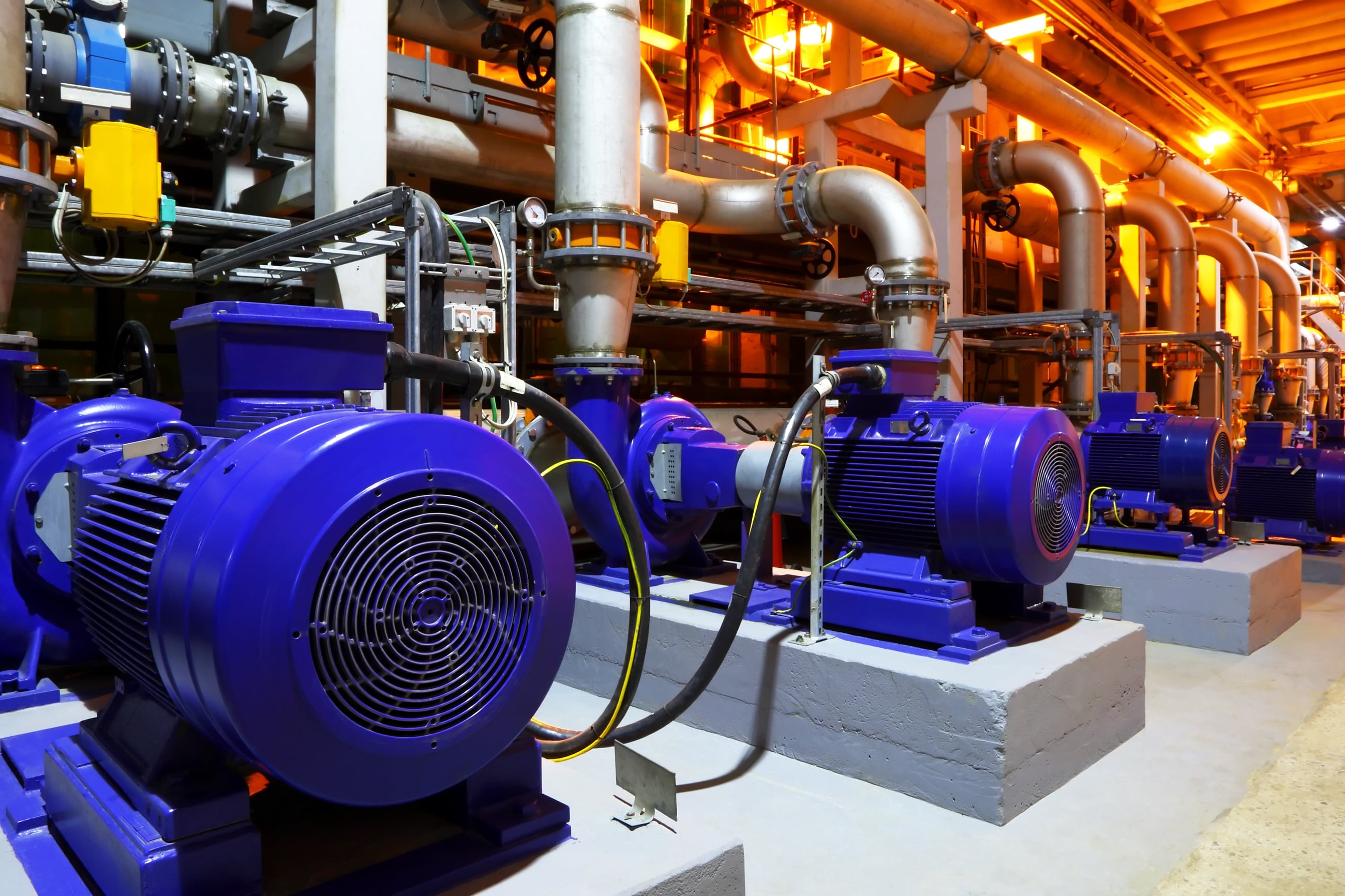NEMA Premium Efficiency Motors: Overview and Benefits

According to the National Electrical Manufacturers Association (NEMA), electric motors account for nearly 40% of total electricity consumption in the US, especially in the industrial and commercial sectors. Improving motor efficiency throughout the country represents a significant opportunity to save energy, so NEMA launched the first version of its Premium Efficiency standard for motors in 2001.
The US Department of Energy estimated that the program could yield the following economic and environmental benefits during the decade after its launch:
- Saving 5,800 gigawatt-hours of electricity for US homes and businesses.
- Preventing the emission of 80 million metric tons of carbon, which is equivalent to removing 16 million cars from circulation.
NEMA Premium Efficiency motors exceed the minimum efficiency legally required by the Energy Independence and Security Act of 2007 (EISA), and the program covers motors with the following characteristics:
- Rated capacity from 1 hp to 500 hp
- Three-phase, low-voltage power supply
- NEMA Design A and B
- General, special and definite purpose motors
Although motors below 1 hp are not covered by the standard, it is possible to achieve similar efficiency levels with electronically-commutated motors (ECM), which are better suited for fractional horsepower applications. ECMs also feature built-in speed control, which means they do not require a variable frequency drive (VFD) to operate below rated speed.
What is the Efficiency of NEMA Premium Motors?
It is important to note that motor efficiency normally varies depending on horsepower and load percentage, so there is no single efficiency value that applies for all NEMA Premium Efficiency motors. However, NEMA Premium is the highest motor efficiency tier in US standards, surpassing both NEMA Energy Efficient motors (intermediate tier) and NEMA Standard Efficiency motors (low tier). In general, efficiency levels become higher as motor horsepower increases, as shown in the following table from NEMA:
|
Motor HP |
Standard Efficiency (%) |
Energy Efficient (%) |
Premium Efficiency (%) |
|
7.5 15 25 50 75 100 |
85.5 86.6 89.3 91.3 91.7 92.3 |
89.5 91.1 92.4 93.2 94.1 94.5 |
91.7 92.4 93.6 94.7 95.4 95.4 |
This table is for motors operating at full-load. However, NEMA Premium Efficiency motors can normally operate at high efficiency for all load values above 50%, reaching their peak efficiency at around 80% load.
Optimize Your Building’s Electrical Systems with Expert Engineering Design.
Although efficiency gains may seem small when upgrading to a higher motor class, consider that the power loss reduction is significant. To exemplify this, assume a standard 100-hp motor will be upgraded to a NEMA Premium version.
- The standard motor draws 80.8 kW, while the NEMA Premium version draws 78.2 kW.
- A reduction of 2.6 kW may seem small compared with the motor’s rated power, but it yields 20,800 kWh in savings assuming 8,000 hours of use per year.
- With an electricity cost of $0.10/kWh, this translates into yearly savings of $2,080.
Motor efficiency gains between classes seem small when viewed as percentages, but the benefits are evident once percentage gains are translated to kilowatts and power bill savings.
Recommendations for NEMA Premium Motors
Like with any energy efficiency upgrade, it is important to carry out a detailed technical and financial assessment before purchasing NEMA Premium Efficiency motors. Consider the following recommendations before proceeding with a purchase:
- NEMA Premium Efficiency motors are an excellent choice in new constructions, where there is already a baseline cost dedicated to motor purchases. In these cases, the efficiency gains of a NEMA Premium motor are weighed against its incremental price, not its full price. There are also many cases where replacing an existing motor is financially attractive, but the highest return on investment is achieved in new installations.
- Upgrading to a NEMA Premium motor yields a higher return on investment when the operating schedule is long. Keep in mind that energy savings are the product of power savings and hours of operation. Upgrading a 15 hp motor that operates 8,000 hours/year will yield twice as much energy savings as replacing one of the same capacity that only operates 4,000 hours/year.
- Consider that percentage efficiency gains are higher for smaller motors. For example, NEMA estimates yearly savings at $126 when upgrading a 10 hp motor from Energy Efficient to Premium Efficiency, and at $278 when upgrading a 100 hp motor, assuming both operate for 8,000 hours/year. If a company must choose between multiple small motors or a few larger ones, due to budget constraints, the return per dollar invested in typically higher for smaller motors. An energy audit is recommended nevertheless, since there are always exceptions.
- Before purchasing NEMA Premium motors, it is recommended that your company reviews local incentive programs. For example, Con Edison customers who upgrade to NEMA Premium motors in New York City can apply for an incentive of $0.16 per kWh saved, which can cover up to 50% of project costs or $1,000,000, whichever is lower.
- Extra savings can be achieved by upgrading electric motors located inside air-conditioned spaces, which is common in commercial settings. NEMA Premium motors dissipate less heat than motors of the same horsepower and lower efficiency, and this heat is subtracted from the load on AC equipment.
Electric motors built according to International Electrotechnical Commission (IEC) standards also have efficiency classes, which are comparable to those of NEMA motors. IE1 is equivalent to standard efficiency, IE2 is equivalent to NEMA Energy Efficient, and IE3 is equivalent to NEMA Premium Efficiency. The IEC also introduces class IE4, which is typically marketed as “Enhanced NEMA Premium” or “Above NEMA Premium” in the US.
Note that efficiency values are comparable between NEMA and IEC motor classes, but not identical. IEC efficiency classes cover motors from 0.75 kW (slightly above 1 hp) to 375 kW (503 hp), with a rated voltage of 1,000 V or less. Motors can have 2, 4 or 6 poles, and can be designed to operate at 50 Hz or 60 Hz.
Conclusion
NEMA Premium Efficiency motors can yield thousands of dollars in yearly savings when deployed in commercial and industrial facilities, and even higher savings are available if they are complemented with a variable frequency drive (VFD). However, keep in mind motors must also be a good match for their application to guarantee efficient operation and a long service life, so professional guidance is highly recommended before any motor upgrade.
An electrical design makes your building safer, while reducing your power bills. NY Engineers has completed over 1000 projects, and you can email at info@ny-engineers.com or call (786) 788-0295212-575-5300.

Michael Tobias
Michael Tobias, the Founding Principal of NY Engineers, currently leads a team of 50+ MEP/FP engineers and has led over 1,000 projects in the US
Join 15,000+ Fellow Architects and Contractors
Get expert engineering tips straight to your inbox. Subscribe to the NY Engineers Blog below.



